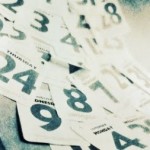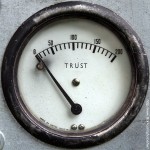Some months ago in Content Reading As Teacher Self-Care I wrote that counterintuitive as it sounds, reading in our content areas, in addition to our normal workload, can amount to self-care. That’s because reading a good content book can reconnect us with our love for our subjects. I’m specifically not referring to textbooks or anything pedagogical, but to books about our subjects that you might find among the science books or history books or poetry books in the local bookstore – the kind of books with content we want to share because it’s what makes our subjects so cool. At the end of the post, I listed some math books that work like that for me (and will include them at the end of this post, too).
But first, as we count down the days to summer vacation (17 as of this writing), I’d like to recommend a few more math titles (and a couple of non-math books as well.)
First, I’m tentatively scheduled to teach Statistics next year. To dust off my memories of that content, I’ve been reading Dark Data: Why What You Don’t Know Matters, by David Hand and The Art of Statistics: How to Learn from Data by David Spiegelhalter. The discusses missing data and compares it to what astronomers refer to as dark matter or dark energy – stuff which quantitatively influences everything, but which we can’t specifically locate. The second gently explains, with good, even fun examples, the standard topics in statistics and probability.
Did you ever notice that between 0, 1, 2, and infinity, numbers are pretty much the same? Eugenia Cheng has and in Beyond Infinity: an Expedition to the Outer Limits of Mathematics, she mulls over many (but not infinitely many) thoughts and questions (often from young children) that the concept of infinity provokes.
In Shape: The Hidden Geometry for Information, Biology, Strategy, Democracy, and Everything Else, Jordan Ellenberg (author of How Not to Be Wrong, listed below) combines much history, literature, science, politics and the like to illustrate, “Where things are and how to look for them,” as he titles his introduction.
Two final math books I’ll read this summer are Arithmetic and Measurement by Paul Lockhart, author of the well-known, A Mathematician’s Lament. His Lament offered some pretty solid critical thinking exercises surrounded by much opinion about how math should be taught. I’m hoping the other books are less polemic and more expository.
And it’s not all math this summer. Two novels I’m really liking are Lincoln Highway, a super road book by Amor Towles, and City on Fire, the first installment in a new trilogy about organized crime in by Don Winslow.
Well, I hope you have a chance to enjoy any of those books. And here are links to the books, blogs, etc. I recommended in the previous post:
Math with Bad Drawings: Illuminating the Ideas that Shape Our Reality, by Ben Orlin. He also has a blog by the same name.
How Not to be Wrong: The Power of Mathematical Thinking, and Shape: The Hidden Geometry of Information, Biology, Strategy, Democracy, and Everything Else, by Jordan Ellenberg.
Infinite Powers: How Calculus Reveals the Secrets of the Universe, by Stephan Strogatz
Living In Data: A Citizen’s Guide to a Better Information Future, by Jer Thorp
Humble Pi: When Math Goes Wrong In the Real World, by Matter Parker
The Simpsons and Their Mathematical Secrets, by Simon Singh
Better Explained is a super blog by Kalid Azad
and
Numberphile is a super YouTube channel by Brady Haran
(Image by Gwyneth Jones – The Daring Librarian. License.)









